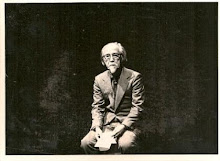
William Keighley shines a light on the FBI with G Men, and by film's end he not only makes popular a colloquial nickname for the bureau's agents but also charts the mythology for the fledgling agency. The movie can be categorized more specifically as government propaganda then it can as gangster movie now, but nonetheless this movie grabs hold of the audience's eyes and ears from the very first scene and doesn't let go till the end credits.
Not counting the prologue, tacked on more than a decade after the film's premiere on J. Edgar Hoover's orders, the film opens with 'Brick' Davis, played by James Cagney, looking directly at the camera and expounding on the merits of truth, justice, and "keeping on the level." Of course this type of attitude hasn't left him with many viable clients.
'Brick' Davis came from the slums and thanks to a less-than reputable benefactor he gets a law degree on gratis. This conflict between where Davis came from and where he wants to go is present throughout every scene in the movie. His benefactor, McKay, is a Prohibition era racketeer and is painted, most likely for the censor's benefit, as an apologetic gangster. With the repeal of Prohibition he can't keep up with the less-than savory rackets that are popping up, making him a powerless figurehead in his own organization.
The relationship Davis and McKay have with one another is quite complicated. Each man is governed by a different set of rules; McKay rules by exploiting personal vices while 'Brick' believes in the power of the law. The only tangible connection they have with each other is geography; both men grew up in the same slums and had to suffer through the same type of obstacles. McKay looks at Davis as a possible do-over, an opportunity for him to help somebody from his neighborhood achieve success without having to corrupt themselves to attain it; for McKay helping Davis is basically a form of penance for all the laws he's broken.
When the film shifts its focus to the FBI we are treated to the science of crime fighting; criminal investigation has been elevated from a job reliant on snitches and stool pigeons to an exact science where microscopic evidence can lead to arrests. During his training Davis finds a mentor in Jeff McCord, played by Robert Armstrong. Although both men don't think much of each other when they first meet, Davis gains McCord's respect after successfully taking down a few of the FBI's Most Wanted through a combination of street smarts and familiarity with the use of a gun and his fists.
The gangsters that Davis and McCord have to collar are amalgamations of real life people during the Great Depression, like John Dillinger and Machine Gun Kelly, and were familiar to most audience members when this movie first came out. As characters these gangsters are mostly one-dimensional, merely story devices used to illustrate just how ineffectual local law enforcement was in stopping these bandits until the FBI finally stepped in as the nation's protector.
A sub-plot develops parallel to the main story where Cagney's character falls head over heels for McCord's sister, Kay. The scenes with Cagney and Margaret Lindsay, who plays Kay, are a great break from all the gun play and this secondary story intersects quite neatly with the main story in the third act.
Keighley traces the FBI's baptism by fire with a re-enactment of two key events during the bureau's war on crime in the 1930's, the Kansas City Massacre and the shootout at the Little Bohemia Lodge with John Dillinger's gang. In real life these events were considered embarrassing disasters for the FBI, but within the movie they are used as justification for the arming of the bureau's agents and also for their use of a shoot first talk later strategy when dealing with so-called public enemies. The film may offer a simplistic and exaggerated account of how the FBI came to be born, but due to the film's success with the public the gangster movie had to now make room for the valiant cop protagonist.




No comments:
Post a Comment